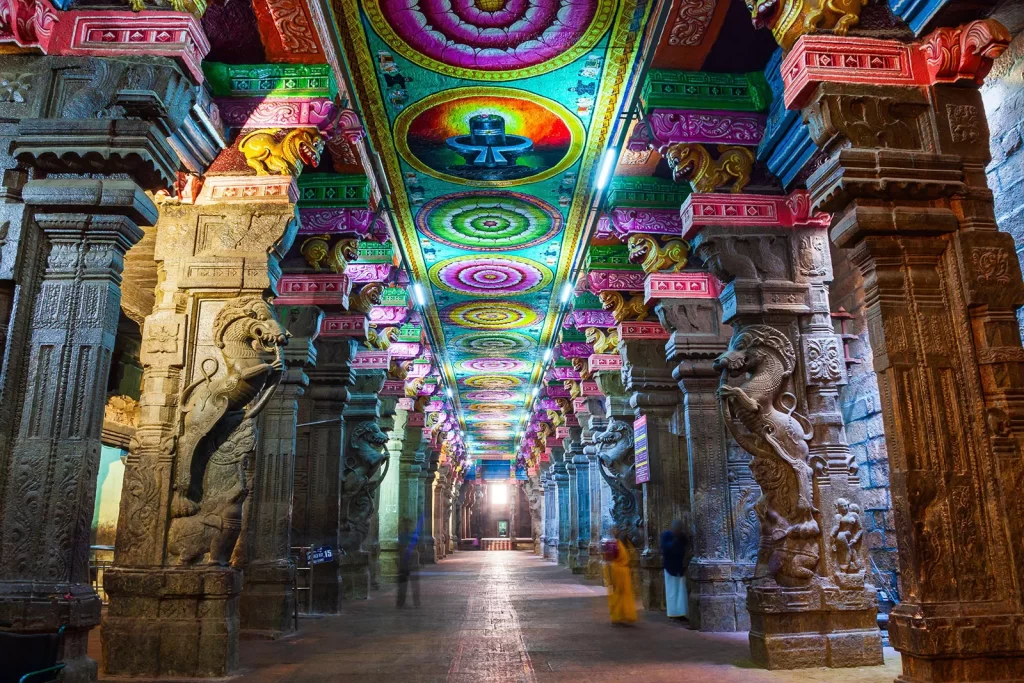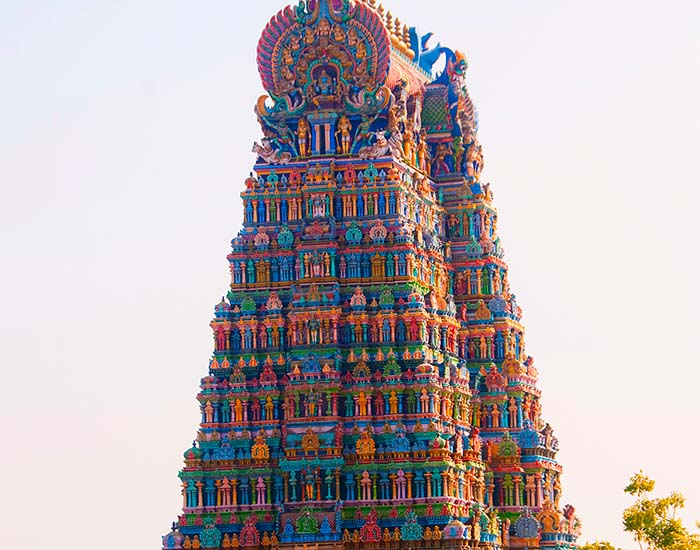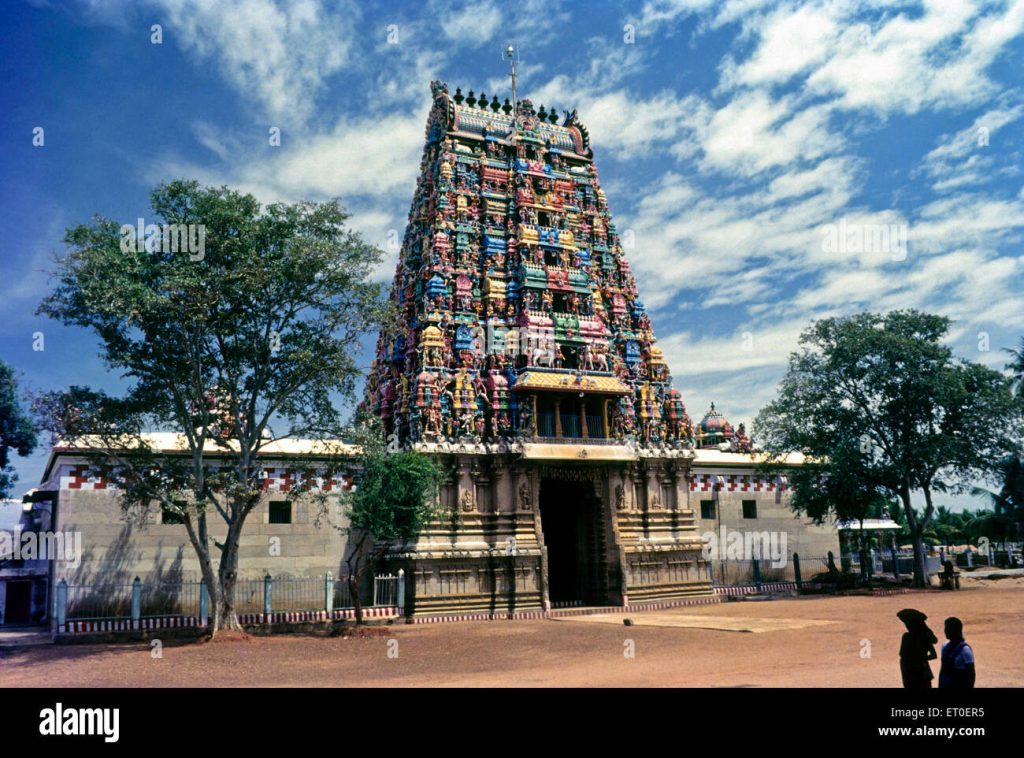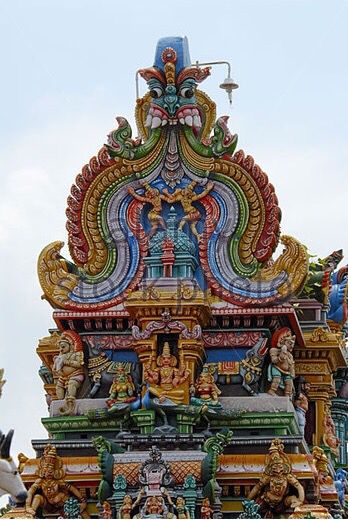KAILASANATHAR TEMPLE
The Kailasanathar Temple, Kanchipuram, also referred to as the Kailasanatha temple, is a Pallava-era historic Hindu temple in Kanchipuram, Tamil Nadu, India. Dedicated to Shiva, it is one of the oldest surviving monuments in Kanchipuram. It reflects a Dravidian architecture and was built about 700 CE by Narasimhavarman II with additions by Mahendravarman III. A square-plan temple, it has a mukha-mandapa (entrance hall), a maha-mandapa (gathering hall) and a primary garbha-griya (sanctum) topped with a four-storey vimana. The main sanctum is surrounded by nine shrines, seven outside and two inside flanking the entrance of the sanctum, all with forms of Shiva. The outer walls of the temple’s prakara (courtyard) is also surrounded by cells.

The Kailasanathar temple is notable for its intricately carved galaxy of Hindu art in the late 7th- and early 8th-century Tamil tradition. These largely relate to Shaivism, yet also include significant number of themes from Vaishnavism, Shaktism and Vedic deities. The temple is also notable for one of the early and best specimens of Hindu mural art in Tamil Nadu. This is found in the inner walls of the courtyard cells. The murals are in a style that is also found in the Ajanta Caves, as well as in the historic paintings in the 8th-century Vaikunthaperumal temple, also in Kanchipuram. The temple walls have many inscriptions in early scripts, important to the epigraphical study of regional history and Tamil temple traditions. The structure contains 58 small shrines which are dedicated to various forms of Shiva. These are built into niches on the inner face of the high compound wall of the circumambulatory passage. The temple is one of the most prominent tourist attractions of the city.
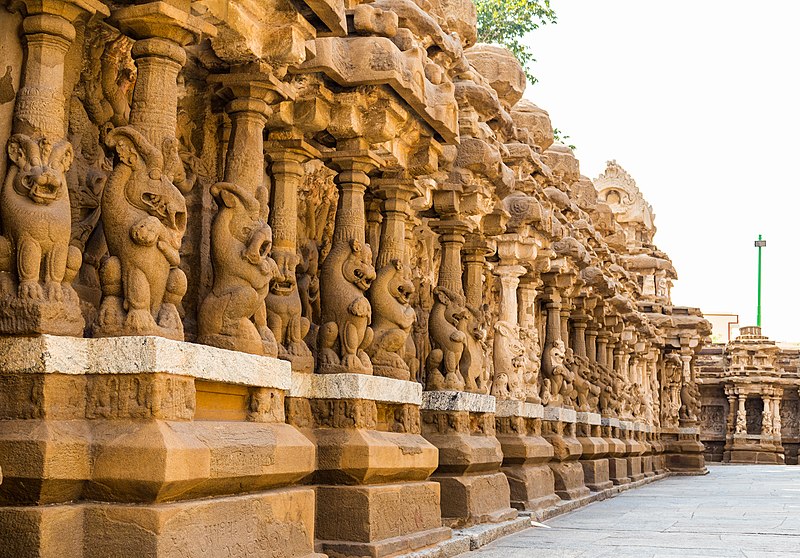
The Kailasanathar Temple (meaning: “Lord of Kailasa”), is built in the tradition of Smartha worship of Shiva, Vishnu, Devi, Surya (Sun), Ganesha and Kartikeya, in Hinduism. Temple construction is credited to the Pallava dynasty, who had established their kingdom with Kanchipuram (also known as “Kanchi” or “Shiva Vishnu Kanchi”) as the capital city, considered one of the seven sacred cities under Hinduism. In Kanchi, after the Pallavas expanded their territories to the north, west and south both within Tamil, Andhra and Kannada territories under Emperor Narasimhavarman I, they started expanding their capital city of Kanchipuram and built many temples of great magnificence. Among the two unique specimens of temple architecture of the period 640–730 CE are the Tiru Parameswara Vinnagaram, which is also known as the Vaikunta Perumal temple and the Kailasanathar Temple.
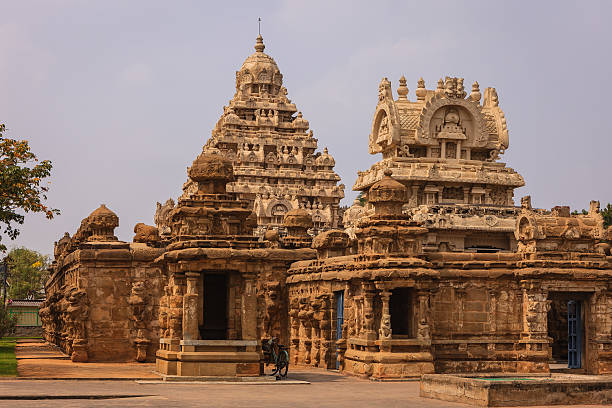
The temple was built around 700 CE with additions in the 8th century and restorations in later centuries. It is the first structural temple built in South India by Narasimhavarman II (Rajasimha), also known as Rajasimha Pallaveswaram. His son, Mahendravarman III, completed the front façade and the gopuram (tower). Prior temples were either built of wood or hewn into rock faces in caves or on boulders, as seen in Mahabalipuram. The Kailasanathar temple became the trend setter for other similar temples in South India. According to local belief, the temple was a safe sanctuary for the rulers of the kingdom during wars. A secret tunnel, built by the kings, was used as an escape route and is still visible. It is believed that Raja Raja Chola I (985–1014 CE) visited the temple and drew inspiration from this temple to build the Brihadeeswara Temple.Currently, Kanchi Kailasanathar Temple is maintained by Archaeological Survey of India.
The temple has retained the Pallava architecture in its original stylized form with influence of the later styles developed by the Chola Dynasty and Vijayanagara Emperors. It is of stone built architecture unlike the rock cut architecture built into hallowed caves or carved into rock outcrops as in Mahabalipuram. The tall gopuram (tower) is to the left and the temple complex is to the right. The temple’s foundations are made of granite, which could withstand the weight of the temple, while the superstructure, including the carvings, are all made of sandstone. Initially, only the main sanctuary existed with pyramidal vimana and a detached Mandapa (main hall).

The temple complex is complete in all respects as it has garbagriha (sanctum sanctorum), antarala (inner enclosure), mandapa, a high compound wall, and an entrance gate, the gopuram. The mandapa, which was initially detached, was made part of the main shrine by interposing an ardhamantapa (smaller hall). The pillars of the mandapa have the repetitive features of mythical lion mounts.The structure has a simple layout with a tower or vimana at the center of the complex. The vimana of the temple, above the main shrine (sanctum sanctorum), is square in plan and rises up in a pyramidal shape. The tower has many levels rising proportionately. At the top of this tower, there is a small roof in the shape of a dome. The pillar elements with mythical animal shapes (lions on the base) are extra features in Pallava style. At the entrance, the gopuram walls are plastered. Its entrance wall has eight small shrines and a gopura, precursor to the main gopura. At some later stage, the mandapa and the sanctuary were joined by an intermediate hall called the ardhamantapa, which is reported to have marred the beauty of the temple to some extent. The temple is enclosed within walls in a rectangular layout.
The main shrine has a 16 sided Shivalinga in black granite stone deified in the sanctum sanctorum. Within the walls of the main shrine there is padabhanda adhisthana (main pedestal) with very elegantly carved images of gods with a sculpted Nandi, a little distance away giving guard to the deity. On each face of the outer walls of the main shrine there are many carvings of deities.
Thanks for reading.

